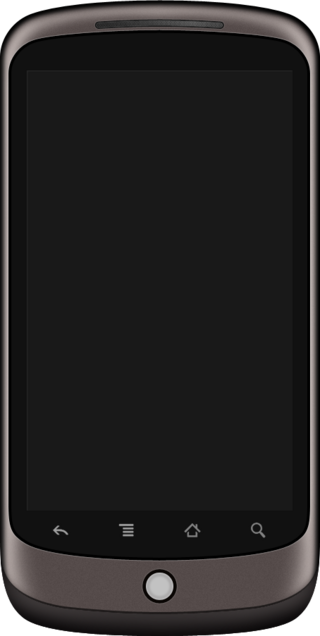
The Nexus One is an Android smartphone designed and manufactured by HTC as Google's first Nexus smartphone. The Nexus became available on January 5, 2010, and features the ability to transcribe voice to text, an additional microphone for dynamic noise suppression, and voice guided turn-by-turn navigation to drivers.

The Samsung GT-I7500 Galaxy is a smartphone manufactured by Samsung that uses the open source Android operating system. It was announced on 27 April 2009 and was released on 29 June 2009 as the first Samsung Mobile device to use the Android operating system introduced in the HTC Dream, and the first in what would become the long-running Galaxy series. It is succeeded by the Samsung Galaxy S.

Samsung Galaxy is a series of computing and mobile computing devices that are designed, manufactured and marketed by Samsung Electronics. The product line includes the Samsung Samsung Galaxy S series of high-end phones, Samsung Galaxy Z series of high-end foldables, Samsung Galaxy A series of Mid-range phones, the Samsung Galaxy Book, the Samsung Samsung Galaxy Tab series, the Samsung Galaxy Watch, the Samsung Samsung Galaxy Buds series and the Samsung Samsung Galaxy Fit.

The HTC Desire is the first smartphone of the Desire series developed by HTC. It was announced on 16 February 2010 and released in Europe and Australia in the second quarter of the same year. The HTC Desire was HTC's third flagship phone running Android 2.1 Eclair which can be upgraded to 2.2 Froyo or 2.3 Gingerbread. Internally it bears a strong resemblance to the Nexus One, but differs in some features.

The Samsung Galaxy S is a touchscreen-enabled, slate-format Android smartphone designed, developed, and marketed by Samsung Electronics; it is the first smartphone of the Samsung Galaxy S series. It is the first device of the third Android smartphone series produced by Samsung. It was announced to the press in March 2010 and released for sale in June 2010. Due to shortage of Super AMOLED displays, Samsung released a successor to the device called S scLCD or SL and ceased production of the original I9000 model.
Google Nexus is a discontinued line of consumer electronic devices that run the Android operating system. Google managed the design, development, marketing, and support of these devices, but some development and all manufacturing were carried out by partnering with original equipment manufacturers (OEMs). Alongside the main smartphone products, the line also included tablet computers and streaming media players; the Nexus started out in January 2010 and reached its end in October 2016, replaced by Google Pixel.

The Samsung Galaxy 5,, is a smartphone. It uses the open source Android operating system (OS). It was announced on June 15, 2010.

The Samsung Galaxy 3, also known as the Samsung Galaxy Apollo, Samsung Galaxy Mini in Italy, or Samsung Galaxy 580 in Hong Kong, is a smartphone manufactured by Samsung that runs the open source Android operating system. Announced and released by Samsung in July 2010, the Galaxy 3 succeeds the Samsung Galaxy Spica.
The Samsung Infuse 4G was an Android smartphone that was released by Samsung in May 2011. It has a 1.2 GHz Hummingbird processor with 8–16 GB internal Flash memory, a 4.5 inch 480×800 pixel Super AMOLED Plus capacitive touchscreen display, an 8-megapixel camera and a 1.3-megapixel front-facing camera.
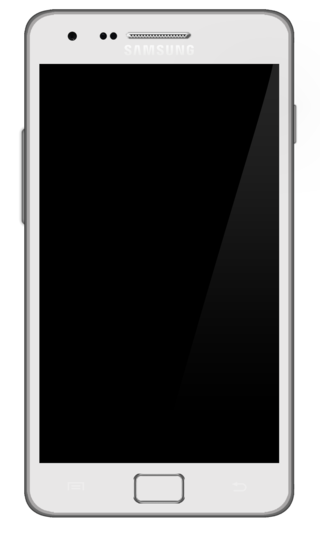
The Samsung Galaxy S II is a touchscreen-enabled, slate-format Android smartphone designed, developed, and marketed by Samsung Electronics, as the second smartphone of the Samsung Galaxy S series. It has additional software features, expanded hardware, and a redesigned physique compared to its predecessor, the Samsung Galaxy S. The S II was launched with Android 2.3.4 "Gingerbread", with updates to Android 4.1.2 "Jelly Bean".
The Samsung Galaxy S 4G LTE also known as the Droid Charge (Verizon), Galaxy S Aviator and Galaxy S Lightray 4G, was an Android smartphone manufactured by Samsung. It has a 1 GHz "Hummingbird" processor, front and rear cameras, and CDMA and 4G LTE radios. It was announced at CES 2011 under the name Samsung Galaxy S 4G LTE device.
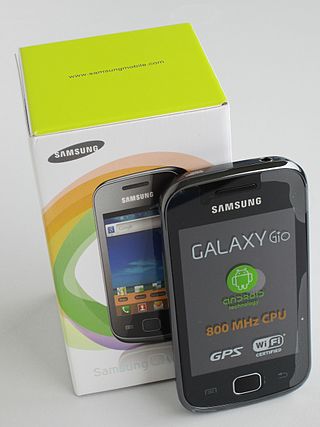
Samsung Galaxy Gio (GT-S5660) is a smartphone manufactured by Samsung and running the Android operating system.
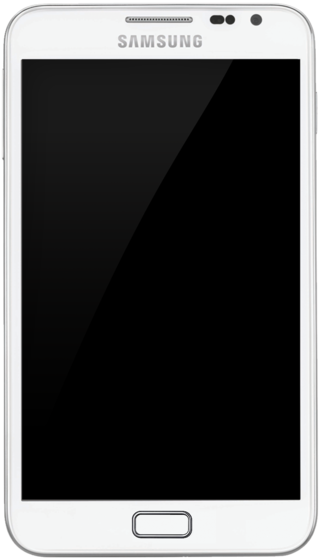
The Samsung Galaxy Note is an Android smartphone produced by Samsung Electronics. It was unveiled at IFA Berlin 2011 and first released in Germany in late October 2011, with other countries following afterwards. The Galaxy Note was distinguished by its unusually large form factor—later referred to using the term "phablet"—which straddled the size of the average smartphone at the time, and that of a small tablet: it features a 5.3-inch display, and is bundled with a stylus branded as the "S Pen", which can be used to navigate the device's user interface, and write or draw in supported apps.
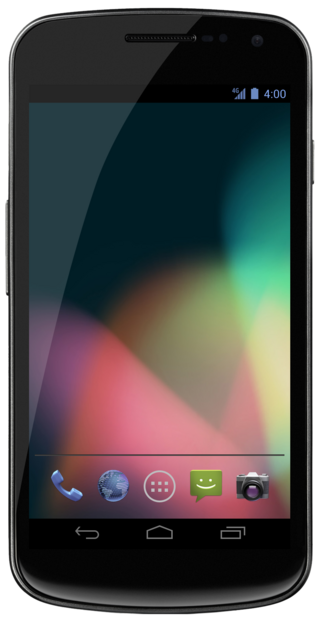
The Galaxy Nexus (GT-I9250) is a touchscreen Android smartphone co-developed by Google and Samsung Electronics. It is the third smartphone in the Google Nexus series, a family of Android consumer devices built by an original equipment manufacturer partner. The phone is the successor to Google's previous flagship phones, the Nexus One and Nexus S.

The Samsung Galaxy S III is an Android smartphone designed, developed, and marketed by Samsung Electronics. Launched in 2012, it had sold more than 80 million units overall, making it the most sold phone in the S series. It is the third smartphone in the Samsung Galaxy S series.

The Samsung Captivate Glide (SGH-i927) as it is called in the United States, and sold as the Samsung Galaxy S Glide (SGH-i927R) in Canada, is the first physical QWERTY Galaxy S class smartphone running under the Android operating system to be released by Samsung for AT&T (US) and Rogers Wireless (Canada).
The smartphone wars or smartphone patents licensing and litigation refers to commercial struggles among smartphone manufacturers including Sony Mobile, Google, Apple Inc., Samsung, Microsoft, Nokia, Motorola, Huawei, LG Electronics, ZTE and HTC, by patent litigation and other means. The conflict is part of the wider "patent wars" between technology and software corporations.

The Samsung Galaxy S LCD or Samsung Galaxy SL (GT-I9003) was an Android smartphone designed and manufactured by Samsung Electronics that was released in February 2011 due to shortage of Super AMOLED displays. It features a 1 GHz ARM Cortex-A8 processor, 4 GB of internal flash memory, a 4-inch 480x800 pixel WVGA Super Clear LCD capacitive touchscreen display, Wi-Fi connectivity, a 5-megapixel camera with a resolution of 2560x1920, and a front-facing 0.3 MP (640x480) VGA camera.
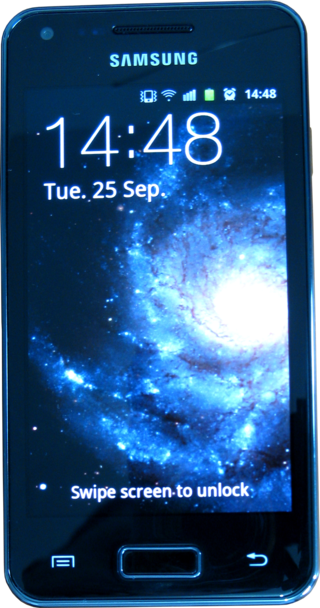
The Samsung GT-I9070 Galaxy S Advance is an Android smartphone manufactured by Samsung Electronics. It was announced on 30 January 2012 and released in April 2012 as an "advanced" variant to the original Galaxy S.

The following is a comparative list of smartphones belonging to the Google Nexus line of devices, using the Android operating system.


















